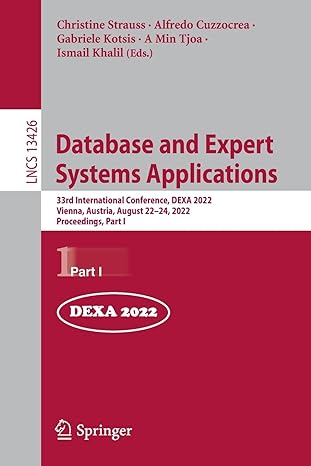Question
An undirected graph is called d-regular if, for every vertex v, (v) = d. For example, in a 3-regular graph, every vertex has three neighbors.
An undirected graph is called d-regular if, for every vertex v, (v) = d. For example, in a 3-regular graph, every vertex has three neighbors.
(a) Draw a 3-regular graph that has exactly six vertices.
(b) Suppose I have a d-regular graph and I want to find a path that contains d+ 1 (or more) vertices. It turns out this is easy to do: pick an arbitrary start vertex. Until I have a path with d + 1 vertices, pick an adjacent vertex to my current one that I have not yet visited. Add that edge to my growing path and set my current vertex to that one. Explain in 1-2 sentences why this will always produce a path with at least d+ 1 vertices. How do I know I wont get stuck at a vertex until it is at least the d + 1th vertex I visit?
Step by Step Solution
There are 3 Steps involved in it
Step: 1

Get Instant Access to Expert-Tailored Solutions
See step-by-step solutions with expert insights and AI powered tools for academic success
Step: 2

Step: 3

Ace Your Homework with AI
Get the answers you need in no time with our AI-driven, step-by-step assistance
Get Started


